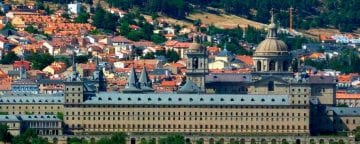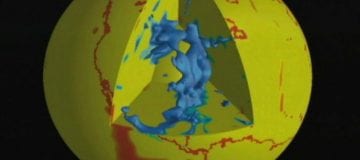One of the most famous monuments in the United States is, without a doubt, the Golden Gate Bridge, but do you know everything behind such a distinguished bridge?
This great bridge joins through its 1970 meters of hanging structure (2737 total) and 227 high, the counties of San Francisco and Marín, crossing the exact point where the San Francisco Bay opens towards the Pacific Ocean.
In today’s post, we will tell you who participated in the construction of the Golden Gate, the details of its design and construction and many other details and curiosities about one of the most important and recognized suspension bridges in the world.

[av_button label=’AASHTO LRFD Bridge Design Specifications: Reinforced Concrete’ link=’manually,http://ingeoexpert.com/en/courses-online/course-aashto-lrfd-bridge-design-specifications-reinforced-concrete/’ link_target=’_blank’ size=’small’ position=’center’ label_display=” icon_select=’yes’ icon=’ue804′ font=’entypo-fontello’ color=’theme-color’ custom_bg=’#444444′ custom_font=’#ffffff’ av_uid=’av-14a05qt’ admin_preview_bg=”]
Who designed and built the Golden Gate Bridge?
The design and construction of the bridge required a large team of structural and traffic engineers, geologists, architects, construction managers among other construction, construction and building professionals.
The chief engineer and architect was Joseph B. Strauss, to whom we attribute the conception, design, and construction.
Charles A. Ellis, an engineering professor at the University of Illinois, participated in the construction due to his technical expertise in the analysis and formulation of solutions in the complex details of a long-range suspension bridge such as the Golden Gate. Despite this, due to disagreements with chief engineer Joseph B. Strauss he was fired.
Leon Moisseiff, a renowned bridge designer who acted as a consulting engineer for the project and, together with Charles A. Ellis, worked on wind analysis and bridge deviation.
Irving Morrov was the architect responsible for designing the streetlamps, bars and vertical striations of the towers and pillars of the bridge. He was also responsible for giving it the orange color that makes the Golden Gate Bridge a recognizable landmark for all the people in the world.
How was the construction process of the bridge?


In November 1930, despite the continuing difficulties lurking the Great Depression, the issuance of $35 million bonds was approved to build the Golden Gate Bridge.
Even so, the construction of the bridge did not begin until 1933 (January 5) and would end in 1937 (April 19), with an expenditure 1.3 million below the initial budget of $35 million.
Key stages in the construction of the Golden Gate
- On December 22, 1932, an access road was made to facilitate the construction and access to the anchorage sites, pier, and towers.
- January 5, 1933: Start of construction.
- From January 1933 to February 1936: Anchors were made in the areas of Marin and San Francisco and the pylons associated with each one.
- San Francisco anchorage was made from January 1933 to May 1935.
- The Marín pier began in January 1933 and ended in June of the same year.
- Marin anchorage took a little longer, from January 1933 to June 1935.
- In February 1933, work began on the access road through the east side from San Francisco that extended to the southern end of the Golden Gate Bridge.
- In March 1933, steel was added for the towers of San Francisco and Marin, which were previously prefabricated in Pennsylvania and transported by land vehicle from Philadelphia and later by barges on the Panama Canal. Once here, Marín’s pier was completed and would be ready for the construction of his tower.
- It took a year (from March 1933 to the same month of 1934) to place the easel to access the tower of San Francisco, which was built 335 meters from the coast.
- In August 1933, Sidney M. Hauptman of the McCormick Steamship Line broke through the thick fog in the area and slammed into the access stand, which damaged about 122 meters. After being repaired, on December 13, 1933, a storm that hit the area again fractured the access stand to the tower, and this time there were more than 244 meters damaged. Repairs were not completed until March 8, 1934.
- On November 7, 1933, the construction of the Marin tower began. Its completion was on June 28, 1934.
- On October 24, 1934, the fender wall of the San Francisco area was completed.
- Between January 1935 and June 28 of the same year, the San Francisco tower was built.
- From here, from August 2, 1935, until September 27 of the same year, the first wire cables were laid to support the sidewalks (which are also known as walkways) and were built through the Golden Strait Gate as preparation for the twist of the main cable.
- In October 1935, the spinning and compression of the main cable began, which did not end until 1936.
- On July 21, 1936, the San Francisco viaduct structures, and the construction of the Fort Point archway began.
- Finally, on November 18, 1936, the two sections of the main section of the Golden Gate Bridge in the center joined, and a brief ceremony was held between people from the San Francisco and Marin area.
- On January 19, 1937, the construction of the road began until April 19.
- After all these construction processes, on May 27, 1937, the Golden Gate was inaugurated and opened to the public.
Curiosities in the construction process
As we have already said, the Golden Gate cost about 35 million dollars, but also the lives of at least a dozen workers. After this, safety nets were installed to protect the lives of the operators from falling to 67 meters from the water level. Thanks to this, many deaths were avoided, and the level of worker safety increased.


Another curious fact to point out is that the Golden Gate Bridge has so many wires that form the cable that you could go around the earth 3 times with them. Exactly 27,572 wires are in each cable.
Today’s Golden Gate Bridge



Today, more than three million vehicles cross the San Francisco’s Golden Gate each month, so traffic in this area is constant.
As a piece of advice, avoid the sidewalks of the bridge as they are usually filled with smoke from cars. However, there are countless places from which you can view this impressive suspension bridge such as the Hawk Hill Trail. You can also see the whales sailing these waters if you sail under the bridge at sunset.
Many visitors advise cycling, would you dare?
Without a doubt, the Golden Gate Bridge is a work of impressive architecture that involved a great job of construction making it today is a symbol and an icon recognized worldwide.
[av_button label=’AASHTO LRFD Bridge Design Specifications: Reinforced Concrete’ link=’manually,http://ingeoexpert.com/en/courses-online/course-aashto-lrfd-bridge-design-specifications-reinforced-concrete/’ link_target=’_blank’ size=’small’ position=’center’ label_display=” icon_select=’yes’ icon=’ue804′ font=’entypo-fontello’ color=’theme-color’ custom_bg=’#444444′ custom_font=’#ffffff’ av_uid=’av-r7npud’ admin_preview_bg=”]
If you have any doubt, do not hesitate to leave it in the comments. We look forward to seeing you in the next post!
Sources:





